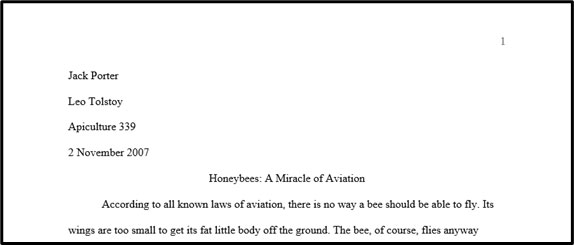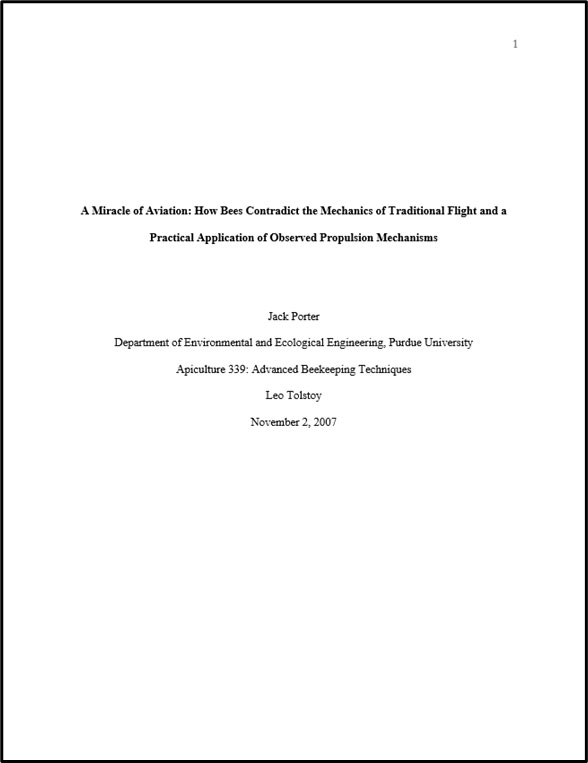So you’ve been asked to use MLA or APA for a class, but what are they?
MLA and APA are examples of writing style guides. Most people know MLA and APA as rules for citation formatting, however, they both include a wide variety of rules for formatting and styling an entire paper. This includes citations, things such as headers and abstracts, and even font and line spacing. In a way, the style guide is similar to styling for any product. It allows you to recognize a paper in that specific style guide when you see it. Style guides like MLA and APA also provide rules for consistent formatting throughout a paper. Consistent formatting makes it easier for someone to read and find where specific evidence comes from or determine whether it’s credible.
Both MLA and APA include guidelines for a number of different components of what you’re writing, but the most commonly referred to component is citations. Citations for APA and MLA alike include parenthetical or narrative in-text citations and longer citations within a reference list. In-text citations are important because they provide credibility for specific sentences or statements, and a reference list allows a reader to look up the sources you used.
MLA and APA are also constantly evolving to fit changing source types and be versatile and usable in all situations. MLA is currently in its ninth edition and APA in its seventh. It’s important to make sure that you use a consistent edition throughout your paper. Make sure that the edition matches the one you’ve been instructed to use.
| MLA | APA |
|---|---|
| In-text Citations: | |
| (Author’s last name & page #) “It is not down on any map, true places never are” (Melville 57) | (Author’s last name, year, & page #) “It is not down on any map, true places never are” (Melville, 1851, p. 57) |
| Reference List Name: | |
| Works Cited | References |
| Reference List Citations: (Dependent on source type) |
|
| Author’s Last name, First name, Title in Title Case Melville, Herman. Moby Dick. Harper and Brothers, 1851. | Author’s First name, Initial(s). Title in sentence case. No periods after URLs Melville, H. (1851.) Moby dick. Harper and Brothers. |
| Title Page: | |
| First-page header required | Separate title page required |
| Running Header: | |
| Last Name & page number | Shortened Title & page number |
| Capitalization of Source Titles: | |
| Title Case: Moby Dick | Sentence Case: Moby Dick |
You may notice that the formats for the Reference List Citations do not give a complete definition of the source. The items listed, for example, in MLA, Author’s Last name, First name, Title in Title Case only give the parts that are included in all formats. Depending on the type of source, you may need to include a publisher and publication date (as shown with the example of the book Moby Dick) or other things like a URL or access date if citing a website. These things are all essential to properly using the style guide and can be looked up using the Purdue OWL (online writing lab), a go-to resource for anyone using MLA and APA. Since there are so many rules about which format to use, online tools like citation machine can be extremely helpful in generating citations quickly, but should always be checked against the official style guides.
Which Should I use?
You will likely be told by your instructor or institution which style to use. However, if you are given the option to choose and aren’t sure which style fits best, MLA is generally used for the humanities and APA for the sciences.
For the purpose of this article, we are focusing on MLA and APA. MLA and APA are only two of the most commonly used style guides.
Here is a list of the common style guides:
| MLA | Modern Language Association | Used for literature, media and humanities |
|---|---|---|
| APA | American Psychological Association | Used for social sciences and research |
| Chicago | University of Chicago | Used for history humanities and social sciences |
| IEEE | Institute of Electrical & Electronics Engineers | Used for engineering and computer science |
| ASME | American Society of Mechanical ENgineers | Used for mechanical engineering |
| AMA | American Medical Association | Used in medicine and nursing |
| AP | Associated Press | Used for journalism and news |
The History of MLA and APA Format
The MLA style guide was originally created in 1952 when the Modern Language Association put together an official 28-page “official” MLA Style Sheet for Writers of Research Papers, Theses, and Dissertations. This was the first document from the MLA recommending uniform formatting across academic work. After many revisions and the beginning of the internet and digital media, the MLA handbook grew to 400 pages to incorporate a vast array of source types and accommodations for accessing internet sources. Over the years, they have changed from suggesting not including URLs to requiring DOIs for articles, so it is important that you use the correct revision when citing in MLA.
The APA style originated slightly before MLA in 1929 when it was published in Psychological Bulletin by the APA to ensure consistency and make reading easier in scientific literature. Since then it has also evolved dramatically and was published as the first edition of the APA publication manual. Since then it has also undergone multiple revisions to accommodate the changing source availability similar to MLA format.
How to use MLA and APA
This article provides a basic guide for how to use MLA and APA formats. Since there is a lot of variety in sources, you can find more thorough information for citations to individual types of sources through a variety of online tools or through the official style guide itself. Check out the Purdue Online Writing Lab (OWL) (MLA) (APA) for thorough style guides.
General Formatting
APA and MLA both suggest using similar formatting
- 12 point Times New Roman font
- Double Spacing
- 1 inch margins
Title Page or Header
As discussed before, MLA formatting does not require a title page, but does require a header. The header should be left aligned and include:
- Author’s name
- Professors name
- Course number
- Date of submission
The title page should also include a centered title for your paper. Here is an example first page:

In APA, a separate title page is required. The title page should have a title that should be centered and bolded. Beneath the title should be
- The author’s name
- The institutional affiliation
- The course name
- The professor’s name
- The submission date

Running Header:
Both APA and MLA require a running header with a page number in the upper righthand corner starting with 1 on the first page including the title page. In MLA style, the running header should have the author’s last name next to the page number on the right. Here is an example MLA header:

In APA style the running head should have a shortened version of the title on the lefthand side of the paper in all capital letters. The shortened title should NOT be present on the first page. Here is an example of an APA running header.

Block Quoting:
Block quoting is a technique used by both MLA and APA citation formats to make it clear where long quotes start and end. To make a block quote, simply indent the start a new line and indent the entire quote as a block without quotation marks. The in-text citation is used directly after the quote, as it would be with a normal quote. There are some specific guidelines about when to use block quotes for both formats: when using MLA format, any quote with more than 4 lines of prose or 3 lines of verse should be indented and used as a block quote. When using APA, any quote longer than 40 words should be treated as a block quote. Here is an example MLA block quote:

Citations
While in-text citations are fairly straightforward, citations in the reference list are less straightforward. There are too many guidelines to put into one article, so we strongly recommend referencing the official style guide or Purdue OWL for any specific case. However, we can give a short rundown on how to format in MLA vs APA.
In-text Citations
In-text citations are simple. They can be delivered either parenthetically or by narrating the information within the text. Any information that is narrated can be removed from the parenthetical citation. This applies to both APA and MLA formats.
For example, one might choose to cite a quote as any of these three (using APA).
| Parenthetical | The island of Kokovoko is so remote that it “is not down on any map, true places never are” (Melville, 1851, p. 57). |
| Partial Parenthetical | Melville describes the island of Kokovoko as so remote that it “is not down on any map, true places never are” (1851, p. 57). |
| Narrated | On page 57 of his 1851 novel Moby dick, Melville describes the island of Kokovoko as so remote that it “is not down on any map, true places never are” |
Reference List
The full citations in the reference list require specific formatting for each portion.
| APA | MLA | |
|---|---|---|
| Author | Last name, Initial. Melville, H. | Last name, First name. Melville, Herman. |
| Capitalization of source title | Sentence case (but capitalize after a colon): Moby dick | Title case:Moby Dick |
| Formatting of titles | No formatting for chapters, articles, etc.; italics for books, journals, etc. | Quotation marks for chapters, articles, etc.; italics for books, journals, etc. |
| Publication date | In parentheses after the author’s name: Melville, H. (1851). … | Later in the reference, not in parentheses: … Harper and Brothers, 2012, … |
| URLs & DOIs | No period after the URL or DOI: https://doi.org/10.7560/IC47402 | Period after the URL or DOI: https://doi.org/10.7560/IC47402. |
References that take up more than one line should also have a hanging indent, meaning that the first line should not be indented but the following lines should be (example is an article from the APA cited in APA-7 format):
American Psychological Association. (2023). About APA Style. American Psychological Association. Retrieved March 24, 2023, from this link
